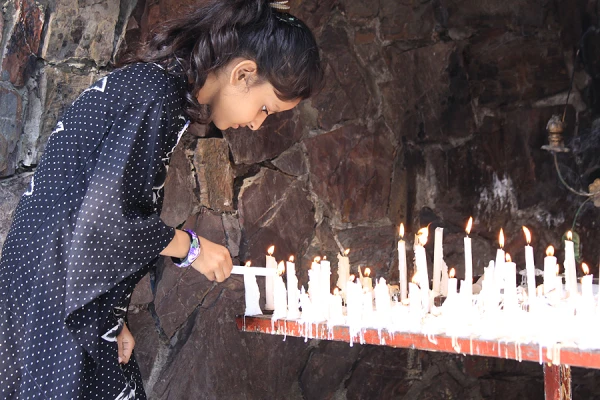
Vatican City, Aug 5, 2017 / 09:42 am (CNA/EWTN News).- On Saturday, Pope Francis made several changes in the Syro-Malankara Church, found predominantly in India, establishing a new eparchy and naming several new bishops, as well as an apostolic visitor.
Announced in an Aug. 5 communique from the Vatican, the Pope has officially established the Eparchy of Parassala, a small village in the Kerala region of India, and named Bishop Thomas Mar Eusebios Naickamparambil as its bishop.
Bishop Naickamparambil was previously in charge of the Eparchy of Our Lady Queen of Peace for Syro-Malankara faithful in the United States and Canada.
Taking his place will be Bishop Stephanos Thottathil, who until now has served as auxiliary bishop of Tiruvalla, in India’s southern state of Kerala, which is predominantly Christian.
An eparchy is similar to a diocese for Eastern Churches. The Syro-Malankara Catholic Church itself is one of the 23 “sui iuris,” or “independent” Eastern Catholic Churches in full communion with the Catholic Church and the Bishop of Rome.
Cardinal Moran Mor Baselios Cleemis is the current Major Archbishop of the rite, and is also President of the Catholic Bishops Conference of India.
In addition to the establishment of the Parassala eparchy and the nomination of its bishop, Pope Francis named Fr. George Kalayil as Bishop of the Eparchy of Puthur, also in Kerala. He had previously served as a priest in the same eparchy.
The Pope also named Fr. John Kuchuthundil as a Curial Bishop and Apostolic Visitor to the Syro-Malankara Church in Europe and Oceania, although no specific reason for the visitation was given.
Bishop Thottathil, who will be taking over the Our Lady Queen of Peace eparchy for the U.S. and Canada, was born in the Pathanamithitta district of Kerala May 9, 1952. He was ordained a priest in 1979, and after serving in various parish assignments, he obtained a doctorate in moral theology from the Alphonsian Academy in Rome.
He then returned to India, where between 2003-2005 he served in various roles, including Vice-Rector of his diocese’s Minor Seminary, Head of the Mission to Delhi, Director of the Pushpagiri Hospital, Professor of Moral Theology, Dean of Theology and Rector of St. Mary’s Malankara Major Seminary. He was consecrated auxiliary bishop of Tiruvalla March 13, 2010.
Bishop Naickamparambil, who will head the new eparchy in Parassala, was born June 6, 1961, in Mylapra, and was ordained a priest in 1986.
After completing his initial studies in philosophy and theology, he went on to earn his doctorate in philosophy in Rome. He speaks Malayalam, English, German, Italian and Hindi, and can read Syriac, Greek and French.
Following his priestly ordination and studies, Naickamparambil served in various roles, including: Vice Pastor and Pastor of several different parishes, Professor and then Dean of Philosophy at St. Mary’s Malankara Major Seminary, Public Relations Officer, Coordinator for interreligious dialogue and Secretary of the presbyteral council, Director of the Sarvodaya Vidalaya school and Treasurer of the Mar Baselios College of Engineering and Technology.
He was named bishop in 2010 for the Syro-Malankara faithful in the United States, and, at the same time, named apostolic visitor of faithful living in Canada and Europe.
According to the Vatican communique, the new eparchy of Parassala that Bishop Naickamparambil will oversee has some 30,750 Syro-Malankara faithful in addition to 220,000 Christians of other rites in the area, which has a total population of roughly 952,500 people.
Overall, the pastoral care of the Syro-Malankara faithful is entrusted to some 22 eparchial priests in 95 parishes, in addition to various religious brothers and sisters, such as priests from the Order of the Imitation of Christ, the Franciscans, Daughters of Mary sisters, Sisters of Imitation of Christ and Sisters of the Sacred Heart.
In total, the Syro-Malankara Church manages more than 50 educational institutions, including 10 high schools.
If you value the news and views Catholic World Report provides, please consider donating to support our efforts. Your contribution will help us continue to make CWR available to all readers worldwide for free, without a subscription. Thank you for your generosity!
Click here for more information on donating to CWR. Click here to sign up for our newsletter.





An Eparchy IS a diocese in the Eastern Churches.
The communique from the Roman Curia (http://press.vatican.va/content/salastampa/it/bollettino/pubblico/2017/08/05/0510/01134.html) correctly states that The Synod made the changes, not the Pope. With sui iuris Eastern Catholic Churches, the Patriarch/Major-Archbishop and his Synod make the changes and Pope confirms them.
This report is very much “inside baseball” — to most readers it merely says that someone they didn’t know existed has been replaced as bishop of an eparchy they didn’t know existed by someone else they didn’t know existed, with no explanations of what if any significance these personnel moves have. For instance, if Parassala is merely “a small village”, why has it been named as a new see? Does it have some special historical significance, such as an apparition of the Blessed Virgin? Where there no large cities in the territory of the new eparchy? As for the changes in bishops, is there a difference in personality or style, or theology, or politics that might either explain the changes or at least indicate what they will mean to the faithful in this Church.